Blogging Sax Rohmer’s The Golden Scorpion, Part Three – “At the House of Ah-Fang-Fu”
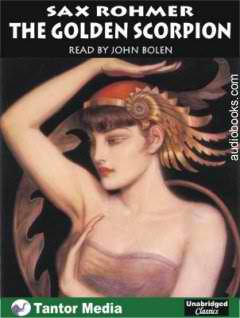
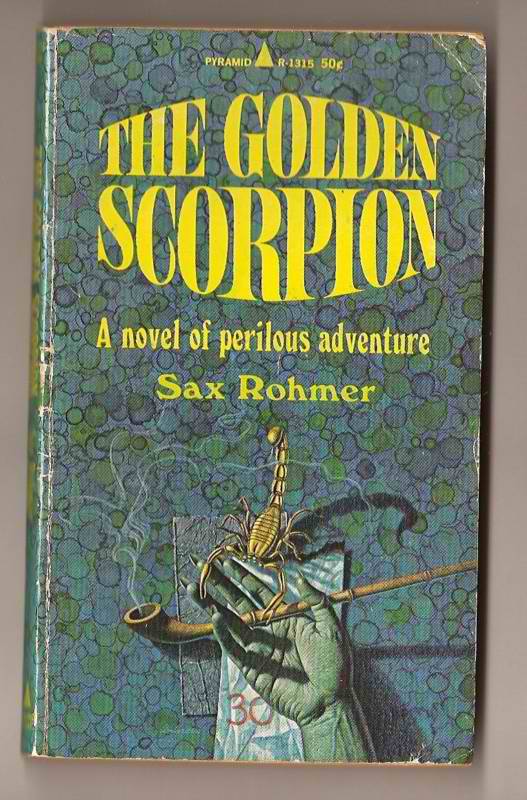 Sax Rohmer’s The Golden Scorpion was first printed in its entirety in The Illustrated London News Christmas Number in December 1918. It was published in book form in the UK the following year by Methuen and in the US in 1920 by McBride & Nast. Rohmer divided the novel into four sections. This week, we shall examine the third part of the book, “At the House of Ah-Fang-Fu” which comprises eight chapters.
Sax Rohmer’s The Golden Scorpion was first printed in its entirety in The Illustrated London News Christmas Number in December 1918. It was published in book form in the UK the following year by Methuen and in the US in 1920 by McBride & Nast. Rohmer divided the novel into four sections. This week, we shall examine the third part of the book, “At the House of Ah-Fang-Fu” which comprises eight chapters.
The story picks up at Scotland Yard where Gaston Max, Inspector Dunbar, and Dr. Keppel Stuart have gathered in the Assistant Commissioner’s office. Max suggests that the veiled figure known as the Scorpion that Dr. Stuart glimpsed in China five years earlier is likely the same criminal known as the Scorpion currently operating out of Limehouse. The Frenchman also believes that Mademoiselle Dorian, aka Zara el-Khala, aka Miska, is likewise an essential key to unravelling the mystery.
Max suggests a connection exists between Mr. King (from Rohmer’s 1915 novel, The Yellow Claw) and the Scorpion. Specifically, the Frenchman theorizes that the two criminals belong to the same Chinese or Tibetan organization whose tentacles have seemingly enveloped the globe. Having named the secret criminal society in the third and, at the time, final Fu Manchu thriller, The Hand of Fu Manchu published the previous year; Rohmer now desired to link his two Gaston Max Limehouse mysteries to the earlier series’ continuity. This is an interesting change of direction as Rohmer had originally taken great pains to separate the more realistic Yellow Claw from the outlandish mayhem of his Fu Manchu thrillers. This reversal not only signalled the fact that he wasn’t entirely ready to be done with the character, but was seeking creative ways of continuing the series without resorting to a purely formulaic approach.
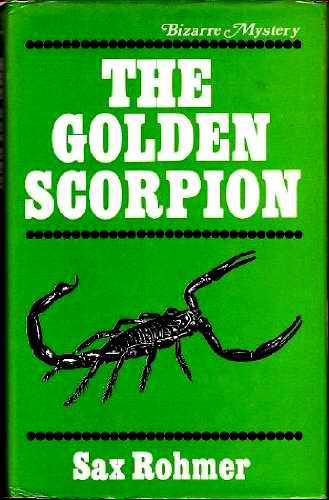
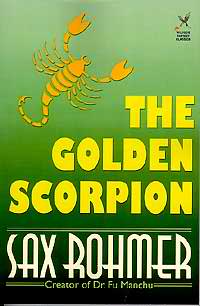 This connection to the earlier series is made explicit when the Assistant Commissioner mentions Inspector Weymouth, now retired from Scotland Yard and serving as Police Superintendant in Cairo, and the ghastly series of crimes in Limehouse he investigated. The Assistant Commissioner also suggests that the Ericksen Ray may have been the object in Henrik Ericksen’s apparent assassination. Sergeant Sowerby provides his report on his surveillance of Mademoiselle Dorian. He has traced her to the Limehouse establishment of Ah-Fang-Fu that is a front for the Pidgin House, an opium den frequented by sailors who have acquired the habit. Gaston Max arranges for a police raid on the Pidgin House for the following night.
This connection to the earlier series is made explicit when the Assistant Commissioner mentions Inspector Weymouth, now retired from Scotland Yard and serving as Police Superintendant in Cairo, and the ghastly series of crimes in Limehouse he investigated. The Assistant Commissioner also suggests that the Ericksen Ray may have been the object in Henrik Ericksen’s apparent assassination. Sergeant Sowerby provides his report on his surveillance of Mademoiselle Dorian. He has traced her to the Limehouse establishment of Ah-Fang-Fu that is a front for the Pidgin House, an opium den frequented by sailors who have acquired the habit. Gaston Max arranges for a police raid on the Pidgin House for the following night.
Dr. Stuart returns home and, after an amusing bit of business with a bemused telephone repairman, opens a letter that has arrived via messenger from Mademoiselle Dorian pleading with him to meet her at Victoria Station. This being a Sax Rohmer novel, our smitten hero is only too willing to do so without first informing Scotland Yard. The two meet at the station and Mademoiselle Dorian asks to be called only by her true name, Miska. Like Karamaneh in the Fu Manchu thrillers, Miska is a victim, rather than a criminal.
Miska was the daughter of Cairo’s chief magistrate, Wali of Aleppo, and a French stage actress who converted to Islam and entered Wali’s harem. She explains how, at age fifteen, she was abducted en route to visit her uncle in Damascus. Her mother was murdered by Arab slavers who took Miska and her cousin to Mecca where they were sold into slavery to Fo-Hi, the Scorpion. Dr. Stuart is amazed to learn that slavery is still a thriving trade in the East, even in “civilized” Cairo.
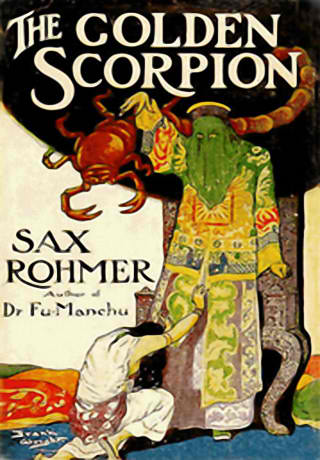
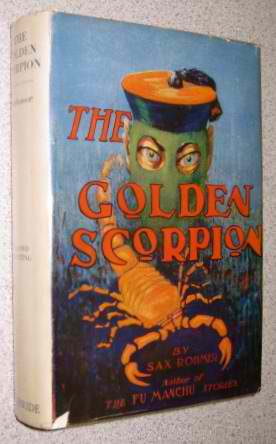 Rohmer has Miska tell of a meeting she witnessed between Fo-Hi and a tall, gaunt green-eyed Chinaman who is also a prodigious scientific genius. She will not tell Keppel his name, but believes the man is now living in Ho-Nan, where the secret society she serves is based. Miska’s recollection confirms that Rohmer had determined there was still a future for Dr. Fu Manchu and, having already positioned Inspector Weymouth in Cairo, he was setting the stage for how the series could resume.
Rohmer has Miska tell of a meeting she witnessed between Fo-Hi and a tall, gaunt green-eyed Chinaman who is also a prodigious scientific genius. She will not tell Keppel his name, but believes the man is now living in Ho-Nan, where the secret society she serves is based. Miska’s recollection confirms that Rohmer had determined there was still a future for Dr. Fu Manchu and, having already positioned Inspector Weymouth in Cairo, he was setting the stage for how the series could resume.
Rohmer then changes perspectives and draws the reader into the twisted domestic life in the Pidgin House by developing the characters of Miska and her caretaker, Chunda Lal. As with Karamaneh’s brother, Aziz in the Fu Manchu thrillers, Miska believes she will die if she were to leave Fo-Hi. Chunda Lal is madly in love with Miska and willing to risk death to betray their feared master for a chance to run away with her to India. Chunda Lal and Fo-Hi are both aware that Miska has fallen in love with Keppel Stuart, though she does her best to deny the fact. Rohmer does an excellent job of making the readers understand and care for these characters in the span of a single chapter delving into the tragic private lives of those for whom slavery is still a reality.
Rohmer shifts back to Dr. Stuart’s home where Inspector Dunbar and Gaston Max call upon the doctor. The three men disguise themselves for their visit to the Pidgin House with the Frenchman taking the identity of the murdered assassin who was mistaken for the detective when he was fished out of the Thames. Max makes reference to an unrecorded case in New York’s Chinatown involving a mysterious Mr. Q, who was also operating out of an opium den.
The group successfully infiltrate the Pidgin House with Ah-Fang-Fu and Chunda Lal deceived into accepting Gaston Max is their now-deceased associate. The resulting police raid on the opium den fails badly. Gaston Max is shot and Ah-Fang-Fu and Chunda Lal escape through a secret passage, taking Miska and Keppel captive. Inspector Dunbar and his men are unable to find any trace of the Scorpion’s secret chamber into which the others have mysteriously disappeared as Part Three concludes on a cliffhanger, leaving the reader eager to learn the novel’s resolution.
William Patrick Maynard was authorized to continue Sax Rohmer’s Fu Manchu thrillers beginning with The Terror of Fu Manchu (2009; Black Coat Press). A sequel, The Destiny of Fu Manchu was published earlier this year by Black Coat Press. Next up is a collection of short stories featuring an Edwardian detective, The Occult Case Book of Shankar Hardwicke and a hardboiled detective novel, Lawhead. To see additional articles by William, visit his blog at SetiSays.blogspot.com